Aims
In the previous four steps, operators have reversed deterioration and restored equipment to its original condition. The aim of Step 5 is to sustain and further raise the levels of reliability, maintainability, and quality thus achieved. This entails reviewing the provisional standards for cleaning, checking, and lubricating developed so far, with the aim of working them up into a definitive set of efficient and comprehensive standards.
Implementation
(1) Review the cleaning, checking, and lubricating standards
We can ensure zero equipment failures and quality defects by identifying and monitoring the state of the equipment and the processing conditions, and keeping these as they should be. To apply the finishing touches to what we have done so far, and ensure that the conditions for zero failures and quality defects are sustained, we need to review our provisional standards for cleaning, checking, and lubricating from the four standpoints detailed below. Figure “Workflow for Step 5 (Autonomous Checking)” shows the procedure for Step 5, and Table “Example of Standard for Cleaning, Checking and Lubricating Bending Machine” illustrates an example of a standard developed in this step.
Zero failures and quality defects
Any necessary checks omitted from the cleaning, checking, and lubricating standards must be identified. This means studying historical records of equipment failures, defects, and inspection errors, and looking at what has been done to prevent them from recurring, to see if anything has been overlooked.
Efficient cleaning, checking, and lubricating
Ways should be found to reduce the number of checks specified in the cleaning, checking, and lubricating standards. Duplicated tasks should be eliminated, and checks should be combined with other work (enabling operators to check the equipment at the same time as cleaning or lubricating it, for example).
Balanced cleaning, checking, and lubricating
The cleaning, checking, and lubricating tasks are often concentrated at the start of the week. The workload should be balanced by reviewing the frequency of the checks, the time they require, and the order they are done in.
Visual management
The visual management aspect of the checks should also be reviewed, along the following lines:
- Is it easy to see where the check needs to be done?
- Is the check itself easy to perform?
- Is it immediately apparent if something is wrong?
(2) Take concrete steps to enhance visual management
The aim of visual management is to prevent human error by making it immediately obvious if anything is wrong. The following list gives some examples of visual controls that could be introduced into various equipment systems in order to flag up irregularities:
Lubrication systems
- Color-coding of lubrication ports
- Labels indicating the type of oil to be used and frequency of lubrication
- Maximum and minimum oil level indicators
- Indicators showing oil consumption per unit time
- Color-coding of oil cans to show the type of lubricant they should contain
Mechanical elements
- ‘Inspected’ stickers and match marks
- Color-coding of bolts to be checked by maintenance technicians
- Color-coding of holes where bolts are not used (e.g. in yellow)
- Signs indicating inspection route
- Displays indicating when a device is operating
Pneumatic systems
- Displays indicating specified pressures
- Oil drip-rate indicators on lubricators
- Maximum and minimum oil level indicators on lubricators
- Plates on solenoids indicating their function
- Pipe joint indicators showing the direction of flow
Hydraulic systems
- Displays indicating specified pressures
- Labels on level gauges
- Labels indicating the type of fluid to be used
- Thermosensitive labels on hydraulic pumps
- Plates on solenoids indicating their function
- Matchmarks on relief-valve locknuts
Drive systems
- Labels indicating types of V-belt and chain to be used
- Labels indicating the direction of rotation of V-belts and chains
- Observation windows for inspecting V-belts, chains, etc.

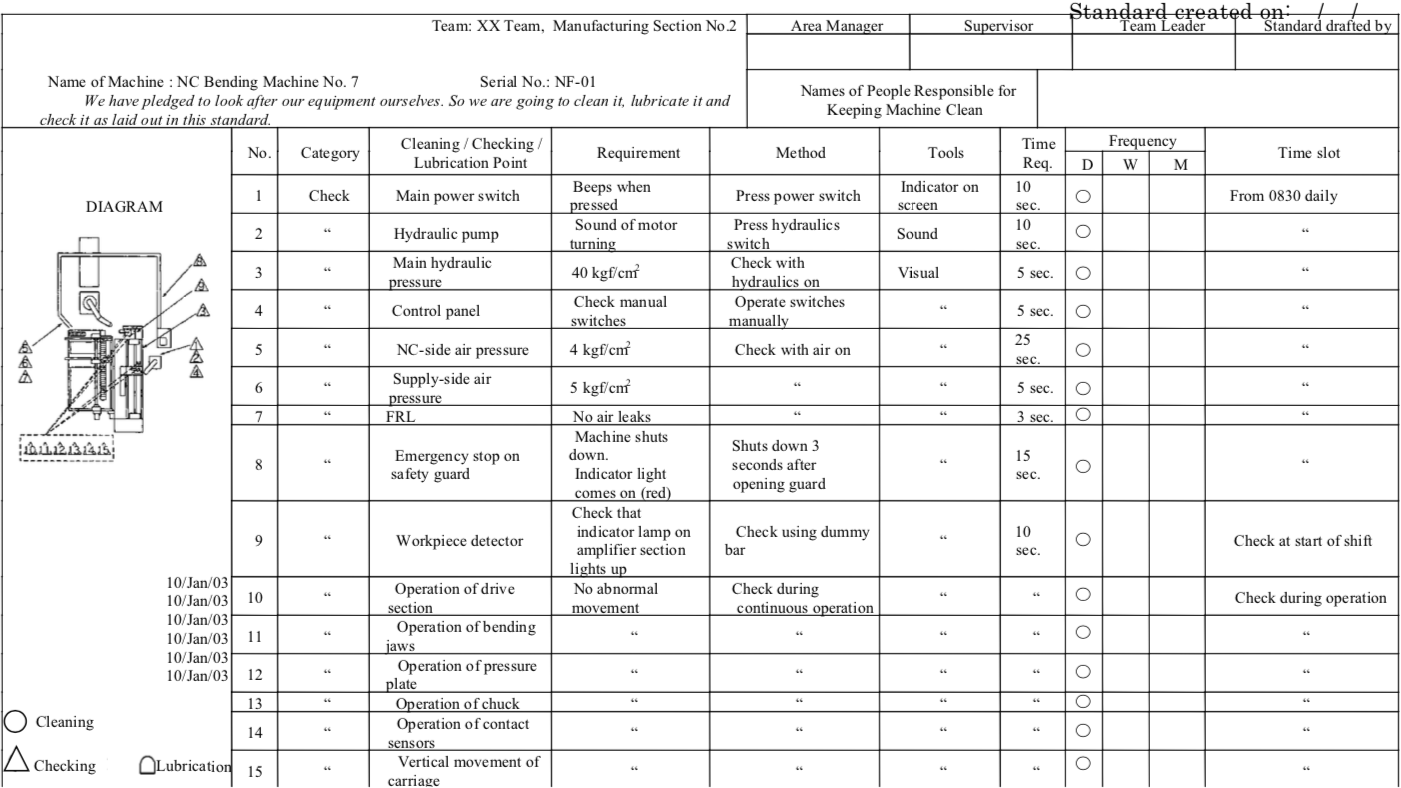
(3) Example of revised checking standards
As the Autonomous Maintenance program unfolds, teams often find that the number of items to be checked, and the time required to do so, increase to the point where they cannot all be covered in the time allowed for daily checking. In the example detailed below, the checks were taking just 10 minutes per day at Step 3, but by the end of Step 4, this had ballooned to 137 minutes per day. This meant that operators started to fall behind with their checks, as they were too busy operating the machines and producing the product to do them all. They, therefore, used Step 5 as an opportunity to revise and improve the standards.
a. Current situation
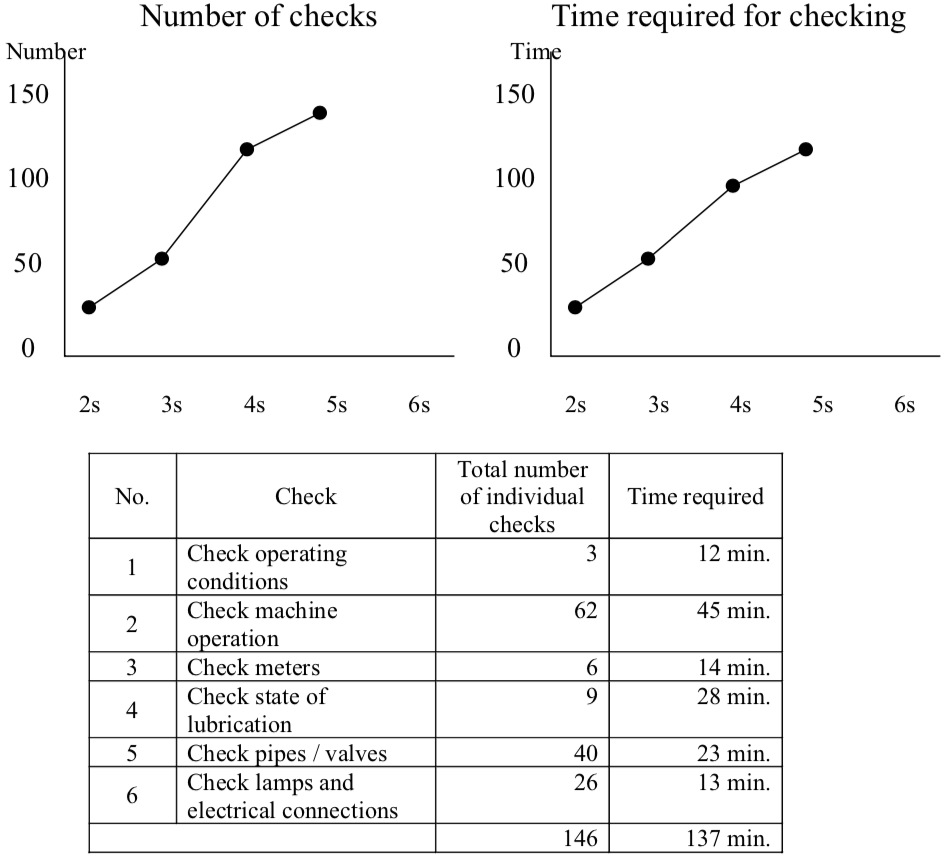
b. Creating a more efficient checking system
- To begin with, different frequency intervals were established for each check, depending on the importance assigned to it (see Table “More efficient checking system”).

- Next, the checking workload was evened out, so that the same number of checks were performed on each day of the week (see Table “Weekly AM checks”).
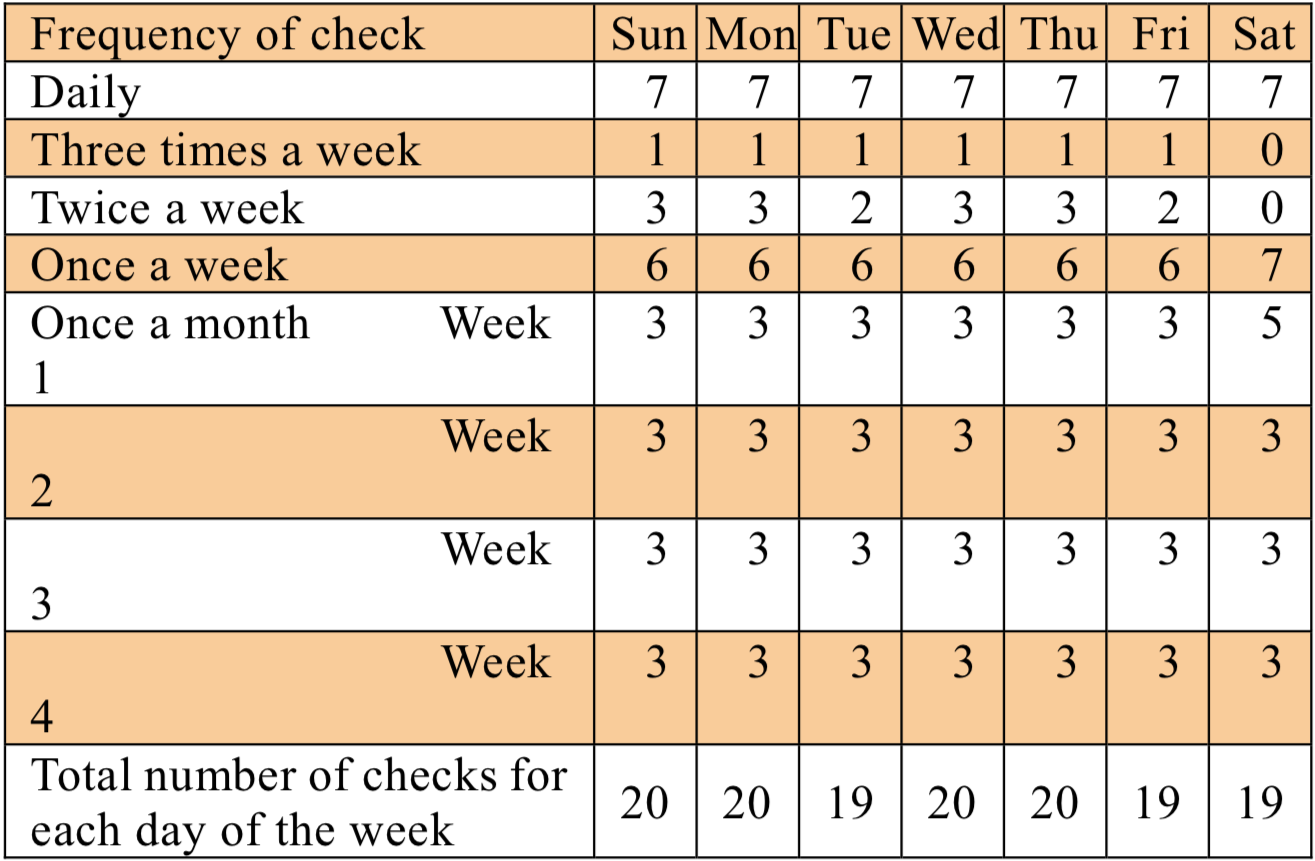
- Finally, the team made other improvements such as installing visual controls on the valves, standardizing the inspection routes, cutting out unnecessary checks, and introducing more efficient lubrication methods.
c. Results
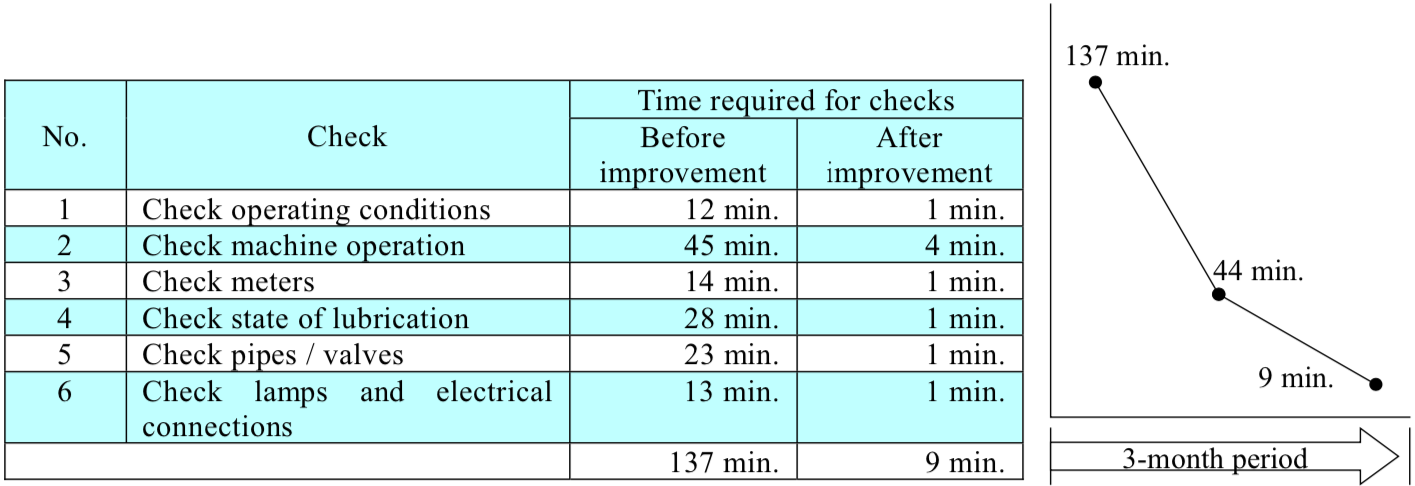
(4) Clarify the roles of the production and maintenance departments
The maintenance department will have its own comprehensive maintenance calendar with servicing standards specifying exactly what needs to be checked, inspected, replaced, stripped down, and serviced, and some of the checks contained in these (ones that do not require the equipment to be stripped down) will have the same objective and be carried out in the same way as equivalent checks that the operators intend to include in their definitive Autonomous Maintenance standards. Some of these checks will be unique to a particular piece of equipment and would be better done by the operators who look after it.
The maintenance department may also notice gaps in the operators’ standards. The maintenance and operating departments should therefore compare each other’s standards for each item of equipment in turn in order to eliminate omissions and duplications (some checks will of course need to be duplicated), decide exactly who is to be responsible for what, and ensure that the two sets of standards together cover everything that needs to be covered, no more and no less.
(5) Checking intervals
Some of the checks included in the operators’ Autonomous Maintenance standards will be performed daily, while others will be carried out weekly, fortnightly, monthly, and so on up to an interval of about three months. Daily checks should cover just the minimum points that must be monitored in order to prevent any serious and unexpected safety or quality problems or major equipment failures. Teams should avoid setting more daily checks than they can reasonably accomplish.
Checking intervals are usually decided on the basis of experience, and it is important for the operating and maintenance departments to get together to pool their knowledge and agree on suitable intervals that reflect the actual history of problems in the equipment while seeking to limit the time spent on doing the checks.
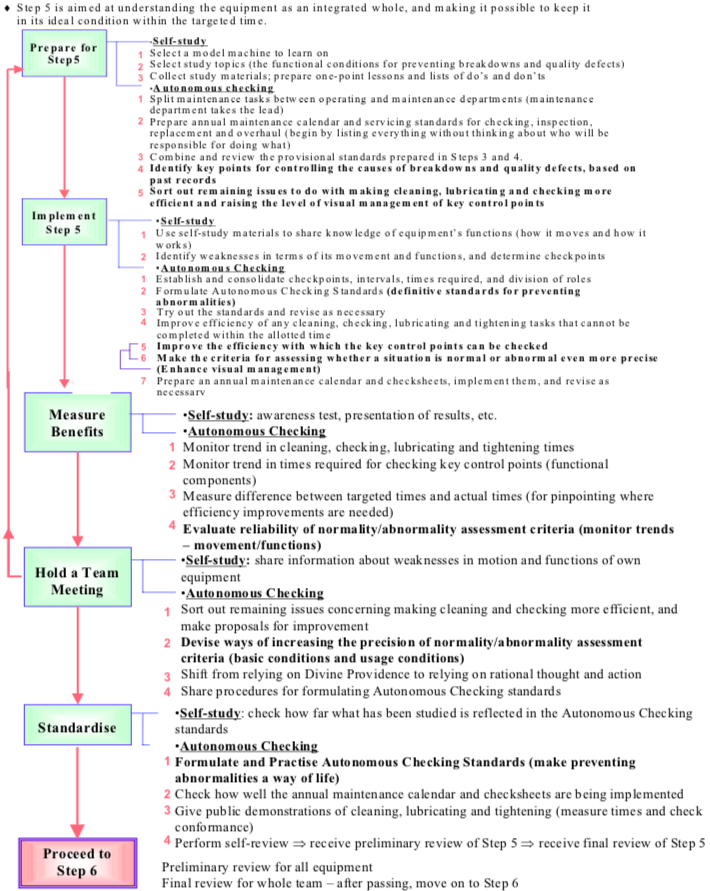
Next→Autonomous Maintenance. Development of standards during Steps 4-5



















Can I get online checklist on paint filling packing lines